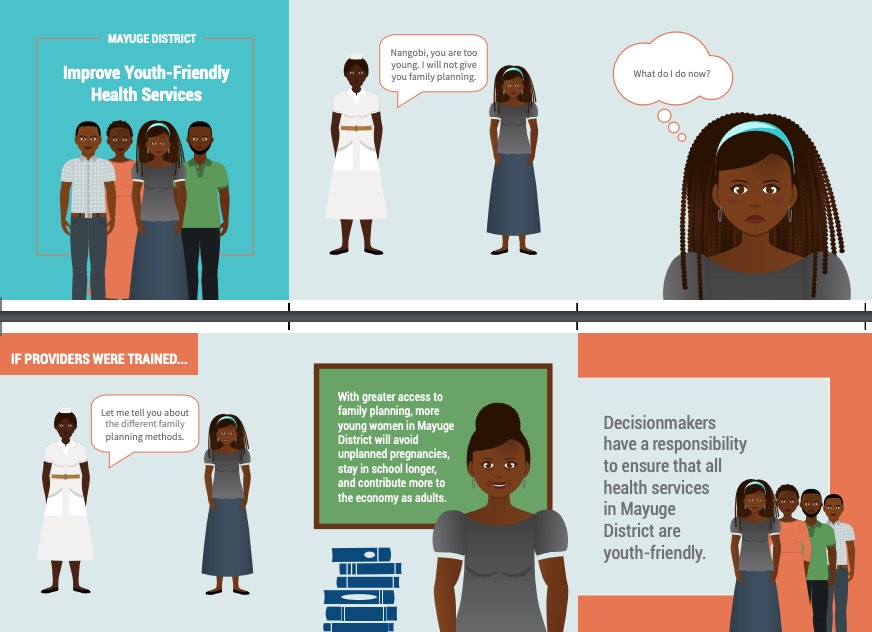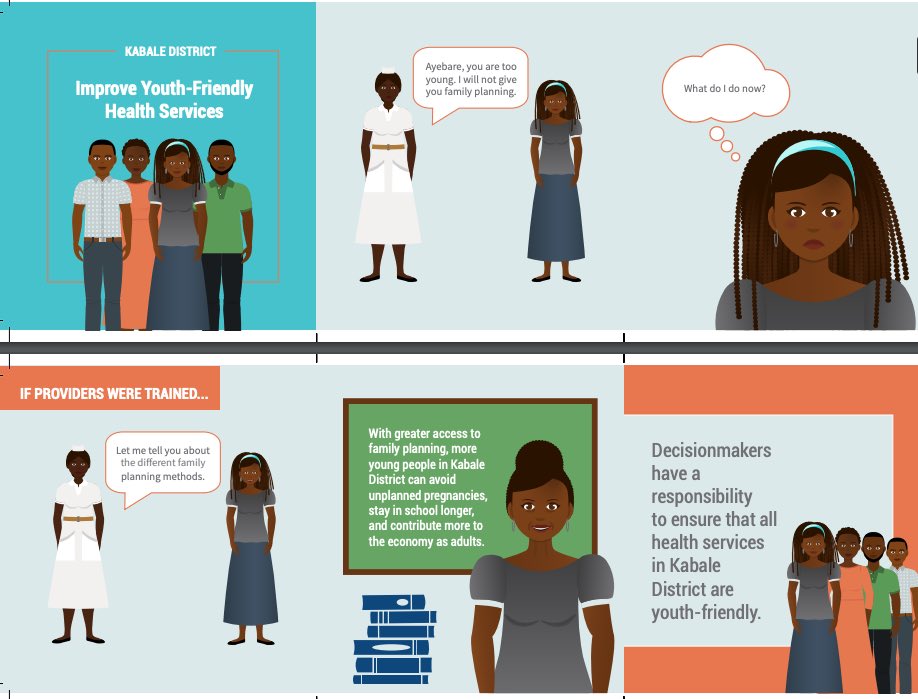Project: Empowering Evidence-Driven Advocacy
Palm Card. Improve Provision of Youth-Friendly Health Services in Mayuge District
The palm cards highlight barriers that youth face in accessing family planning services and information that meet their unique needs.


